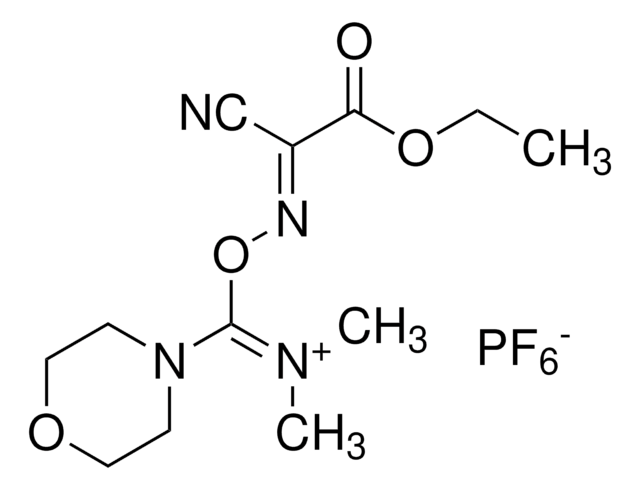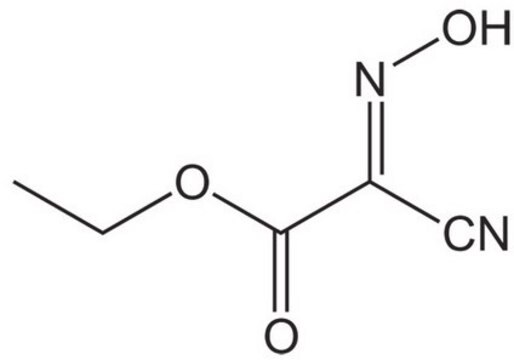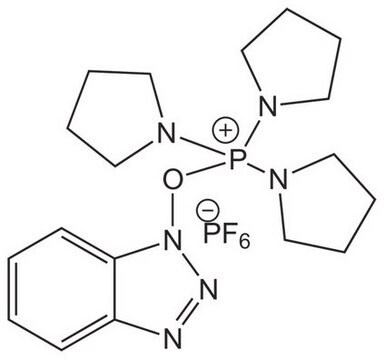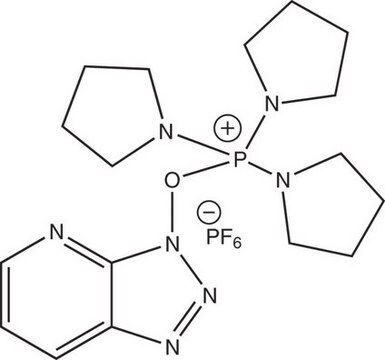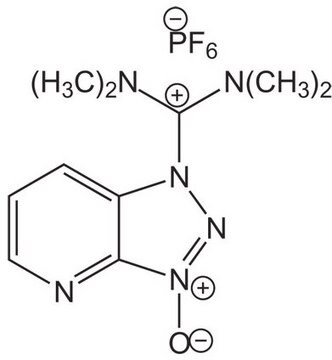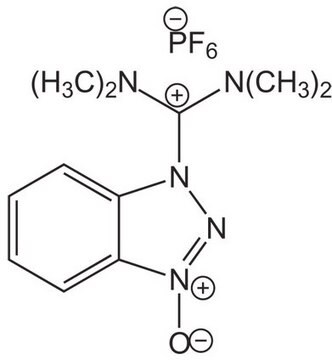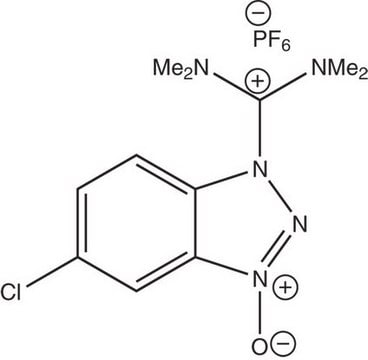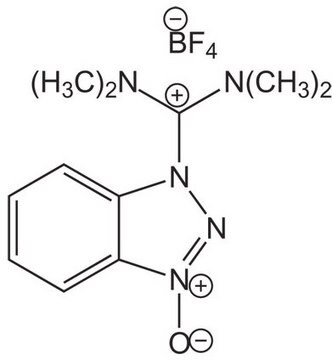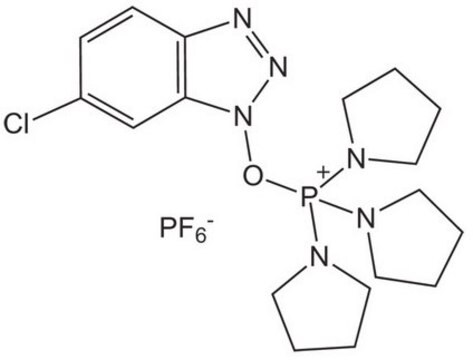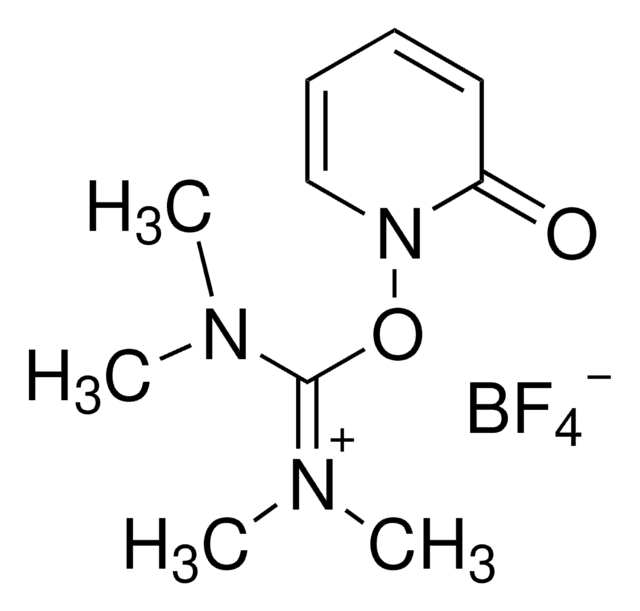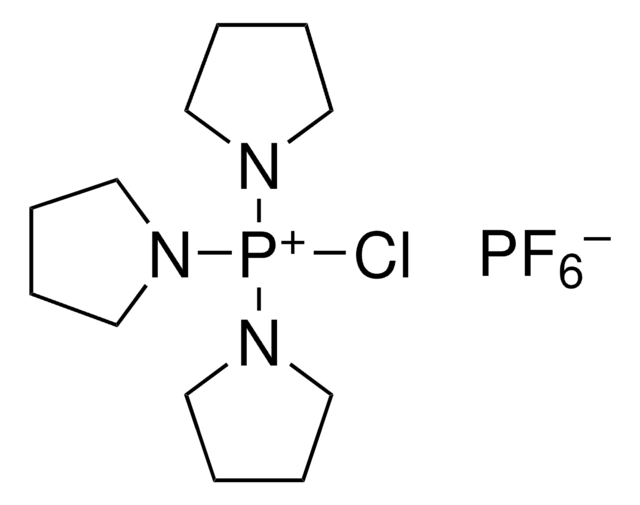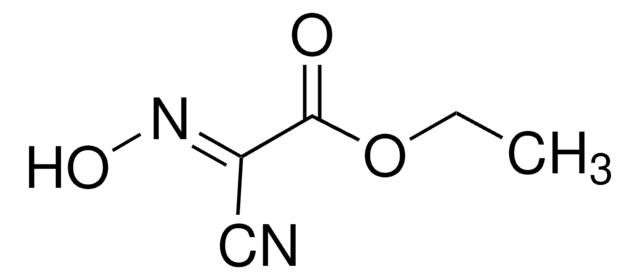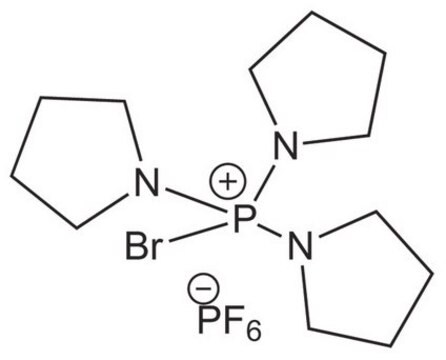8.51085
COMU
≥99.0% (HPLC), for peptide synthesis, Novabiochem®
Synonym(s):
COMU, 1-[(1-(Cyano-2-ethoxy-2-oxoethylideneaminooxy)-dimethylamino-morpholino)] uronium hexafluorophosphate
About This Item
Recommended Products
product name
COMU, 1-[(1-(Cyano-2-ethoxy-2-oxoethylideneaminooxy) dimethylaminomorpholino)] uronium hexafluorophosphate Novabiochem®
Quality Level
product line
Novabiochem®
Assay
≥99.0% (HPLC)
form
powder
reaction suitability
reaction type: Coupling Reactions
manufacturer/tradename
Novabiochem®
mp
>140 °C
application(s)
peptide synthesis
storage temp.
15-25°C
InChI
1S/C12H19N4O4.F6P/c1-4-19-11(17)10(9-13)14-20-12(15(2)3)16-5-7-18-8-6-16;1-7(2,3,4,5)6/h4-8H2,1-3H3;/q+1;-1/b14-10-;
InChI key
GPDHNZNLPKYHCN-DZOOLQPHSA-N
General description
Associated Protocols and Technical Articles
Guide to Selection of Coupling Reagents
Literature references
[1] A. El-Faham, et al. (2009) Chem. Eur. J., 15, 9404.
[2] A. El-Faham & F. Albericio (2010) J. Pept. Sci., 16, 6.
[3] Jean-d′Amour, et al. (2011) Org. Lett., 13, 2988.
Application
- Re-evaluating the stability of COMU in different solvents: This study highlights the robust stability and effectiveness of COMU, promoting its use in various peptide synthesis scenarios, enhancing both scalability and environmental friendliness (Kumar et al., 2017).
Analysis Note
Appearance of substance (visual): powder
Identity (IR): passes test
Assay (HPLC, area%): ≥ 99.0 % (a/a)
Solubility (10% in acetonitrile): clear
Legal Information
Storage Class Code
11 - Combustible Solids
WGK
WGK 3
Flash Point(F)
Not applicable
Flash Point(C)
Not applicable
Certificates of Analysis (COA)
Search for Certificates of Analysis (COA) by entering the products Lot/Batch Number. Lot and Batch Numbers can be found on a product’s label following the words ‘Lot’ or ‘Batch’.
Already Own This Product?
Find documentation for the products that you have recently purchased in the Document Library.
Customers Also Viewed
Articles
Novabiochem® offers a large number of coupling reagents for in situ activation. In situ activating reagents are easy to use, fast reacting – even with sterically hindered amino acids, and their use is generally free of side reactions
Our team of scientists has experience in all areas of research including Life Science, Material Science, Chemical Synthesis, Chromatography, Analytical and many others.
Contact Technical Service